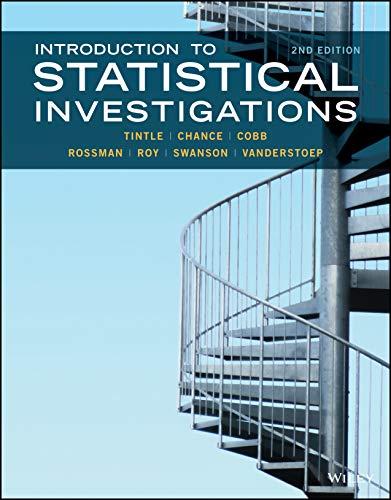Consider doing a chi-square goodness-of-fit test with the null hypothesis of 1 = 2 =
Question:
Consider doing a chi-square goodness-of-fit test with the null hypothesis of π1 = π2 = π3 = 1/3 on two different sets of data. For categories 1, 2, and 3, respectively, dataset A has observed values of 10, 15, 10, whereas dataset B has observed values of 100, 150, 100.
a. What are the observed ratios (e.g., 1:2:1) for each of the datasets and how do they differ?
b. Based on the observed ratios, would you say one dataset would provide stronger evidence against the null hypothesis than the other? Explain.
c. Calculate the chi-square test statistic for each dataset.
d. Based on the chi-square test statistics, which dataset provides stronger evidence against the null hypothesis? Explain why that makes sense.
Step by Step Answer:

Introduction To Statistical Investigations
ISBN: 9781119683452
2nd Edition
Authors: Beth L.Chance, George W.Cobb, Allan J.Rossman Nathan Tintle, Todd Swanson Soma Roy





